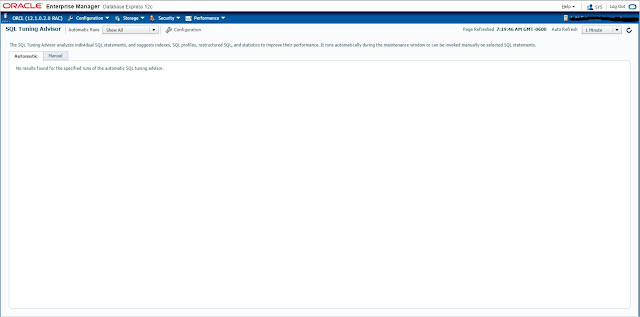Introduction
Exadata Compute nodes and storage cells come with an Integrated Lights Out Manager or simply ILOM. ILOM is an adapter card in each compute node and storage cell that operates independently of the operating system. The ILOM boots up as soon as power is applied to the server and provides web and SSH access through the management network. Using ILOM you can perform several tasks remotely that would otherwise require physical access to the servers, this includes access to the remote console, attach diag.iso image, power server on and off, and rebooting or resetting the server. Also ILOM monitors the configuration and server internal hardware components.
In this article I will demonstrate step by step procedure on how to boot Exadata Compute node with the diagnostic ISO image using Web ILOM Remotely.
Steps to Mount diag.iso On An Exadata Compute Node Using ILOM Console:
- Copy/Download diag.iso to desktop machine
You can copy the diag.iso image from a good working compute node or storage cell to the desktop as shown below. You have an option to download image file from MOS note as well. See the MOS note 2001454.1 for more details.
Locate the diag.iso image on a good working server
Using WinScp copy the diag.iso image to the desktop/laptop
- Connect to the WEB ILOM as shown below
Open a web browser and enter the ILOM Hostname or ILOM IP address you want to attached diag.iso image
Enter the root user credentials
This is the ILOM home page which brief information about the server. On the left pane you have different options that you can use to manage the server remotely.
- Launch Remote Console by following the steps below
On the left pane Expand "Remote Control" and Click on "Redirection"
Click on "Launch Remote Console" button
Click Ok
Click Ok
Click Continue
Click Run
Now we can access the server remotely.
- Attach the diag.iso to Remote Console as follows
Click "KVMS" and Click on "Storage"
Click "Add" Button
Select the "diag.iso" image file on the local desktop/laptop
Click Ok
- Reboot the Server to boot from ISO image as follows
On the left pane expand "Host Management", Click on "Host Control" and Select "CDROM" as Next Boot Device and Click Save button
On the left pane expand "Host Management", Click on "Power Control" and Select "Power Cycle" and Click Save button
Click Ok
- Now the System is booting from diag.iso image
- Perform the desired action
Enter 'e' to enter into interactive mode or
Enter 'r' to perform a system restore from NFS backup
At this stage the server booted from diag.iso, enter into interactive mode, restore/recovery the machine or correct the OS configuration that you have and when you are done, disable redirection.
Conclusion
In this article we have learned how to mount diag.iso on Exadata compute node and boot Exadata Compute node. Using ILOM you can perform several tasks remotely that would otherwise require physical access to the servers, this includes access to the console, power server on and off, and rebooting or resetting the server.


















































